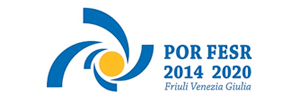Generic Questions
-
What types of flexible arms can I order?
Carniaflex offers a hundred standard flexible arms that can be transformed / combined into thousands of different solutions that vary according to materials, diameters, lengths, terminals, finishes etc.
-
How can I find the right product for my needs?
Carniaflex is able to meet the needs of both aesthetic and functional flexible arms that you need. The product range offers you the raw materials (iron, brass, aluminium) or painted in black (or other RAL colours) or chrome or nickel coated with black / white heat-shrink tubing; other metals / finishes are made on Customer request. To find the model with features suited to the performance required, we provide standard designs, codes related to the diameter and the rigidity of the charts with sealing / stiffness and requirements for the proper use and safety. Click here for more info (go to page sheets).
-
How can I order a Carniaflex flexible arm?
Carniaflex needs the external / internal dimensions of the flexible arm which is identified in the Codes Tab (CF ............). Alternatively, to receive a suggestion from Carniaflex, we need to know the weight that must be supported, the manner of use (table, wall, ceiling), if there are going to pass cables inside and the length that you want to use (tied to charts sealing / stiffness). To complete the product is therefore necessary to know (in addition to the length) if you want to include the final standard terminals (male / female threaded 10 × 1) or designed by the customer. If an iron, brass, aluminium flexible arm is not enough, we can apply the desired finishing. You can also attach a photo / draw with the necessary informations of the flexible arm you are looking for.
-
Once created and identified the product how I can recognize it and rearrange it after some time?
All products for customers are encoded in a unique and unambiguous way that make not possible accidental loss or information loss even after many years. For each product is assigned a code and a bill of materials, and where required, or in more complex cases, a drawing. Although the specific requirements of the test, seal or other needs that the customer wants, are documented in order to have the information always online and available to the trade and production. For customer protection and confidentiality of information encodings, the products always differ from customer to customer in order to prevent the traceability between different customers.
-
Carniaflex provides samples?
Is assured full cooperation in order to facilitate the realization of the products our customers needs. Once we identify the Carniaflex product that meets the customer needs, and before starting production, for tests and functional tests of the customer is always suggests to request a sample that usually is free shipping, if contained in some blank standard.
Technical Questions
-
What components have the flexible arms?
It consists of an internal spring in harmonic steel (or on request Steel) and an outer coating annealed metal (iron, brass, aluminium) in its triangular shape is interposed between the coils of the spring and with its friction generates the stiffness / flexibility of the product.
-
What is the difference between the materials (coating) of the flexible arms: iron, brass and aluminium?
Iron is the most subject to oxidation phenomena, however, presents the same functional characteristics as brass sealing and resistance to bending cycles. The aluminium may not have the chrome or nickel finishes but it is particularly suitable for the flexible arms and it is not subject to as many bends during their life cycle, in addition to being the lighter material. Brass is used worldwide for its excellent stability and versatility in applications subject to considerable stress (microphones, table lamps, examination lamps, etc.).
-
How can I know the standard elements terminals coupled to the flexible arms?
Since several hundreds of different terminals, once identified the product of the maximum and / or at the request of the customer are supplied drawings pdf of the required components
-
Are there any information on how to use it and what is the correct use?
Certainly yes. They are reported in a pdf file, which you can find here , and there are reported: the Recommended minimum bend radius, the Warnings or Dangers, Usage Maintenance and Storage.
-
How can I read the table "TYPES-Flex"? For example, if we take the CF15B, what is the meanings of the texts and the numbers "CF ... B / R / S / other"
In this case it uniquely identifies the Carniaflex flexible arm measure 14.8 × 8.2mm. CF is only used to avoid writing "Carniaflex flexible arm". The following numbers gives the immediacy of the external dimension in millimeters nearest to which it refers, avoiding the use of the decimal (14,8 es.il becomes CF15). Each size / outside diameter is born with its ideal dimensions and its own rigidity we call the Base with the letter B, then we have the possibility to increase the stiffness (version R = Reinforced) or make it softer or Soft in movement (hence the letter S). The table TYPES Flex "codes and characteristics" we place in the column indicated by the equal sign "=" type B. While left denote by a minus sign "-" type S decrease stiffness and with the plus sign "+ "the type R. Other letters dlteriori give directions in the same way. If the customer does not find the solution in the products indicated in the table, then they are presented other existing or developing a product "ad hoc", which will be documented and explained to the client but not published.




